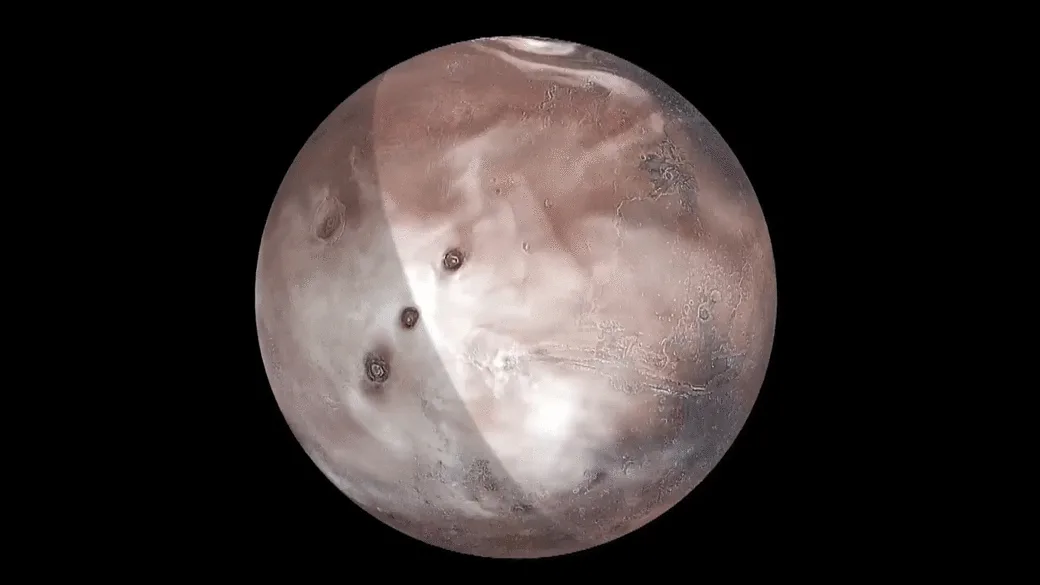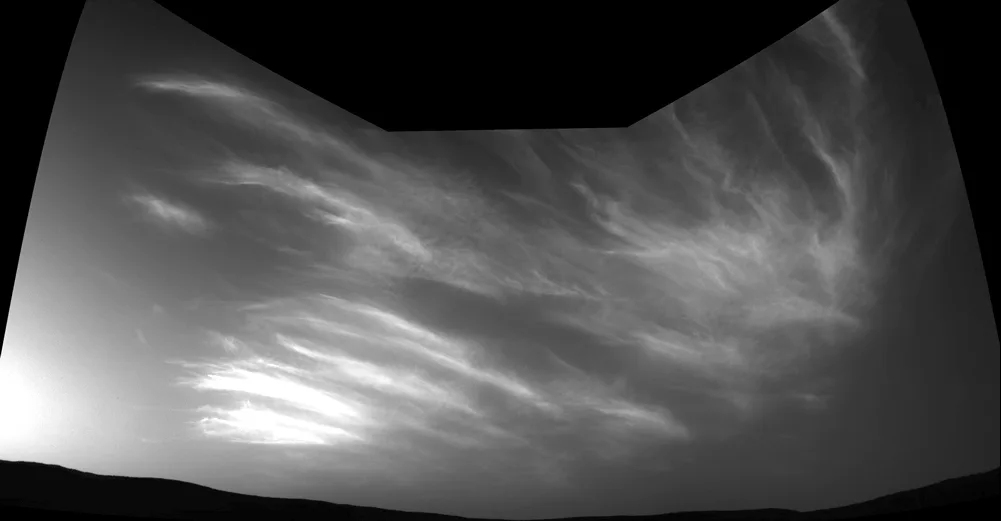
Cloudy skies on Mars modelled by NASA supercomputers
Earth isn't the only planet where we can model weather
Mars may be seen as a dry, barren, dusty world, but it has surprisingly active weather.
Images taken by rovers, landers and satellites have been showing us views of clouds high in the Martian sky. These clouds form as the tiny amount of water vapour in the thin Mars atmosphere freezes out onto dust particles and even meteorite particles. The result are cirrus clouds and even noctilucent clouds.

These 'noctilucent clouds' were captured by NASA's Curiosity Mars rover on May 17, 2019 (Sol 2,410). They form roughly 30 km up, so high that they are the last thing illuminated by the Sun even after it has slipped beyond the horizon. Credit: NASA/JPL-Caltech
This is surprisingly Earth-like behaviour from the Red Planet, but there is still something very alien about these clouds.
Without the thick atmosphere, oceans, precipitation and other factors that affect Earth's weather, Martian clouds follow a very predictable pattern of formation and dissipation.
The animation posted by NASA, above, was produced by supercomputers at the Mars Climate Modeling Center, at Ames Research Center, in Mountain View, California.
Scientists ran this comptuer model to show how clouds form slowly during the Martian night, as temperatures drop. The clouds reach their thickest around dawn, and then they dissipate throughout the day as they are warmed by the Sun.
Although some of the clouds form near the summits of Mars' immense extinct volcanoes, they are not volcanic in nature. The volcanoes simply provide lift to the air, as winds blow up their slopes, which makes it easier for clouds to form.
These are only thin clouds, but Mars researchers say they represent a significant movement of water vapour around the planet, and they are an important aspect of Mars' climate.
